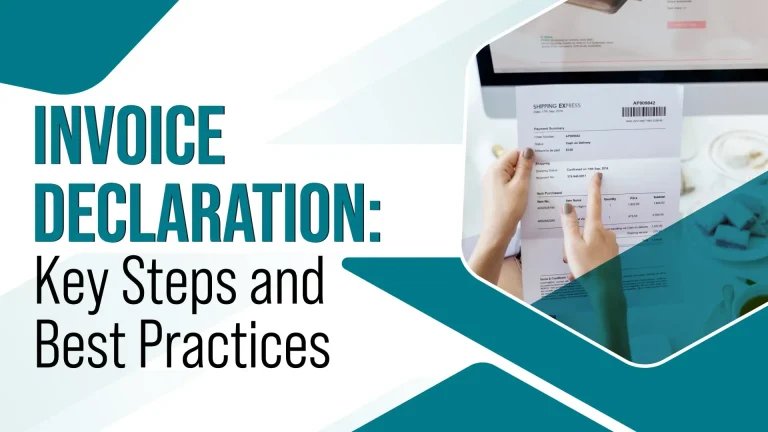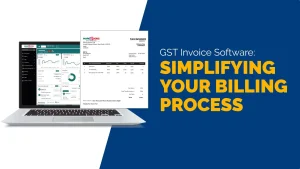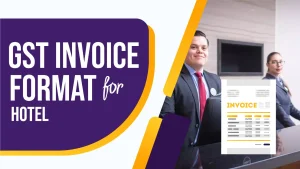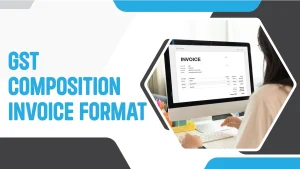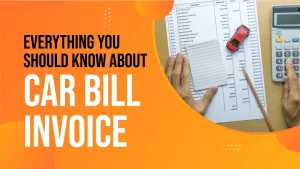In the world of business, managing finances efficiently is crucial for success. One essential aspect of financial management is the invoice declaration. This process involves detailing the specifics of transactions between a buyer and a seller, ensuring transparency, and maintaining accurate records. In this blog, we will delve into the key steps and best practices for invoice declaration. We will explore what an invoice declaration is, why it is important, and how to implement it effectively. By understanding these concepts, businesses can enhance their financial management and ensure compliance with regulatory requirements.
What is an Invoice Declaration?
An invoice declaration is a formal statement made by a seller to a buyer, detailing the goods or services provided, their quantities, and the agreed-upon prices. This document serves as a record of the transaction and is critical for both parties to maintain accurate financial records. It typically includes essential information such as the date of the transaction, invoice number, seller and buyer details, descriptions of goods or services, quantities, unit prices, total amounts, and payment terms.
Key Elements of an Invoice Declaration
- Date: The date when the invoice is issued.
- Invoice Number: A unique number assigned to each invoice.
- Seller and Buyer Details: Names, addresses, and contact information.
- Description of Goods or Services: Detailed list of items or services provided.
- Quantities: The number of each item or service provided.
- Unit Prices: The cost per unit of each item or service.
- Total Amount: The overall cost of all items or services.
- Payment Terms: Conditions under which payment is to be made.
Importance of Invoice Declaration
Legal Compliance
One of the primary reasons for issuing invoice declarations is to comply with legal requirements. Many jurisdictions mandate that businesses provide detailed invoices for every transaction. Failure to do so can result in penalties, fines, or legal action. By issuing invoice declarations, businesses can ensure they are meeting their legal obligations and avoiding potential legal issues.
Financial Transparency
Invoice declarations promote financial transparency by providing a clear record of transactions. This transparency is crucial for both buyers and sellers as it helps prevent disputes and misunderstandings. It allows both parties to verify the details of the transaction and ensures that the agreed-upon terms are met.
Accurate Record-Keeping
Accurate record-keeping is vital for effective financial management. Invoice declarations help businesses maintain detailed records of their sales and purchases. These records are essential for preparing financial statements, filing taxes, and conducting audits. Without proper invoice declarations, businesses may struggle to keep accurate records, leading to financial discrepancies and potential issues with tax authorities.
Cash Flow Management
Invoice declarations also play a crucial role in cash flow management. They provide a clear timeline of when payments are due, helping businesses plan their cash flow effectively. By tracking outstanding invoices and payment terms, businesses can ensure timely collections and avoid cash flow shortages.
Invoice Declaration Format Example
Invoice Declaration
Invoice Date: [Date]
Invoice Number: [Invoice Number]
Seller Information
Name: [Seller Name]
Address: [Seller Address]
Email: [Seller Email]
Phone: [Seller Phone]
Buyer Information
Name: [Buyer Name]
Address: [Buyer Address]
Email: [Buyer Email]
Phone: [Buyer Phone]
| Description | Quantity | Unit Price | Total |
|---|---|---|---|
| [Item Description 1] | [Quantity 1] | [Unit Price 1] | [Total 1] |
| [Item Description 2] | [Quantity 2] | [Unit Price 2] | [Total 2] |
Subtotal: [Subtotal]
Tax: [Tax]
Total Amount: [Total Amount]
Key Steps in Invoice Declaration
1. Collecting Necessary Information
The first step in the invoice declaration process is to gather all the necessary information. This includes details about the buyer and seller, descriptions of the goods or services provided, quantities, unit prices, and payment terms. It is essential to ensure that all the information is accurate and complete to avoid any discrepancies later.
2. Creating the Invoice
Once all the necessary information is collected, the next step is to create the invoice. This can be done manually using templates or through invoicing software. The invoice should include all the essential details, such as the date, invoice number, buyer and seller information, descriptions of goods or services, quantities, unit prices, total amounts, and payment terms.
3. Reviewing the Invoice
Before sending the invoice to the buyer, it is crucial to review it thoroughly. This step ensures that all the information is accurate and complete. Any errors or omissions can lead to disputes or delays in payment. Reviewing the invoice also provides an opportunity to ensure that it complies with legal requirements and internal policies.
4. Sending the Invoice
After reviewing the invoice, the next step is to send it to the buyer. This can be done via email, postal mail, or through invoicing software. It is important to ensure that the invoice is sent to the correct recipient and that it includes clear instructions on how to make the payment.
5. Tracking and Follow-Up
Once the invoice is sent, it is essential to track its status and follow up if necessary. This involves monitoring the payment due date and sending reminders if the payment is not received on time. Tracking invoices helps businesses manage their cash flow effectively and ensures timely collections.
Best Practices for Invoice Declaration
1. Use Clear and Concise Language
When creating invoice declarations, it is important to use clear and concise language. This helps ensure that the buyer understands the details of the transaction and reduces the risk of misunderstandings. Avoid using jargon or technical terms that may confuse the recipient.
2. Include All Essential Information
To ensure the invoice declaration is complete, include all the essential information. This includes the date, invoice number, buyer and seller details, descriptions of goods or services, quantities, unit prices, total amounts, and payment terms. Omitting any of this information can lead to disputes and delays in payment.
3. Ensure Accuracy
Accuracy is critical when creating invoice declarations. Double-check all the details to ensure that the information is correct. Any errors or discrepancies can result in disputes and delays in payment. It is also important to ensure that the invoice complies with legal requirements and internal policies.
4. Use Professional Templates
Using professional templates can help streamline the invoice declaration process. These templates ensure that all the essential information is included and presented in a clear and organized manner. Professional templates also give a polished and professional look to the invoice, enhancing the business’s credibility.
5. Automate the Process
Automating the invoice declaration process can save time and reduce the risk of errors. Invoicing software can generate invoices quickly and accurately, ensuring that all the necessary information is included. Automation also allows businesses to track invoices, send reminders, and manage payments more effectively.
6. Maintain Records
Maintaining records of all invoice declarations is crucial for effective financial management. These records serve as proof of transactions and are essential for preparing financial statements, filing taxes, and conducting audits. Ensure that all invoice declarations are stored securely and can be easily retrieved when needed.
7. Provide Clear Payment Instructions
To avoid delays in payment, provide clear payment instructions on the invoice. This includes details on how to make the payment, accepted payment methods, and any applicable bank account information. Clear instructions help ensure that the payment process is smooth and efficient.
8. Follow Up on Outstanding Invoices
Following up on outstanding invoices is essential for timely collections. Send reminders to buyers if the payment is not received by the due date. This helps manage cash flow effectively and ensures that the business receives the payments on time.
Common Challenges in Invoice Declaration
1. Inaccurate Information
One of the common challenges in invoice declaration is providing inaccurate information. This can lead to disputes and delays in payment. To avoid this, double-check all the details before sending the invoice to ensure that the information is accurate and complete.
2. Late Payments
Late payments can significantly impact a business’s cash flow. To mitigate this issue, send reminders to buyers if the payment is not received by the due date. Clearly communicate the payment terms on the invoice and follow up regularly to ensure timely collections.
3. Disputes
Disputes can arise if there are discrepancies between the invoice and the actual transaction. To prevent disputes, ensure that the invoice declaration is accurate and complete. Communicate clearly with the buyer to resolve any issues promptly.
4. Compliance with Legal Requirements
Compliance with legal requirements can be challenging, especially for businesses operating in multiple jurisdictions. Stay updated on the legal requirements for invoice declarations in your region and ensure that your invoices comply with these regulations.
5. Record-Keeping
Maintaining accurate records of invoice declarations can be challenging, especially for businesses with a high volume of transactions. Implementing an organized record-keeping system and using invoicing software can help manage records effectively.
Conclusion
Invoice declaration is a critical aspect of financial management for businesses. It ensures legal compliance, promotes financial transparency, and helps maintain accurate records. By following the key steps and best practices outlined in this blog, businesses can enhance their invoice declaration process and improve their financial management. From collecting necessary information to sending and tracking invoices, each step plays a vital role in ensuring smooth and efficient transactions. By implementing these practices, businesses can avoid common challenges, manage cash flow effectively, and ensure timely collections.
Also Read
- How to Ensure Data Security in Your Invoice Management SystemIn today’s digital age, businesses rely heavily on technology to streamline operations and improve efficiency. An invoice management system plays a crucial role in managing financial transactions and maintaining accurate records. However, with the increasing reliance on technology comes the… Read more: How to Ensure Data Security in Your Invoice Management System
- GST Invoice Software: Making Billing EasyIn today’s busy world of business, being efficient is super important. One big thing that needs to be super efficient is billing. With new technology, old-fashioned manual billing is out of date and can make a lot of mistakes. That’s… Read more: GST Invoice Software: Making Billing Easy
- GST Invoice Format for HotelIn the hospitality industry, especially for hotels, managing financial transactions is a very important task. One key part of this financial management is creating invoices that follow the rules of the Goods and Services Tax (GST) in India. Having a… Read more: GST Invoice Format for Hotel
- GST Composition Invoice FormatThe GST (Goods and Services Tax) Composition Scheme is a straightforward and user-friendly taxation scheme designed for small businesses in India. This scheme reduces the compliance burden for small taxpayers by allowing them to pay GST at a fixed rate… Read more: GST Composition Invoice Format
- Everything You Should Know About Car Bill InvoiceWhen it comes to car purchases, sales, repairs, or rentals, a car bill invoice is an essential document. This invoice serves as a record of the transaction and provides a detailed account of the services rendered or goods sold. Understanding… Read more: Everything You Should Know About Car Bill Invoice
Frequently Asked Questions
What is an invoice declaration, and why is it important?
An invoice declaration is a formal document issued by a seller to a buyer, detailing the specifics of a transaction. It includes information such as the date, invoice number, buyer and seller details, descriptions of goods or services, quantities, unit prices, total amounts, and payment terms. This document is important because it ensures transparency, helps maintain accurate financial records, and complies with legal requirements. It also aids in avoiding disputes and misunderstandings by clearly outlining the transaction details.
What information should be included in an invoice declaration?
An invoice declaration should include the date of issuance, a unique invoice number, details of the buyer and seller (names, addresses, and contact information), a description of the goods or services provided, the quantities of each item, the unit prices, the total amount, and the payment terms. Including this information ensures that both parties have a clear understanding of the transaction and helps maintain accurate records.
How does an invoice declaration help with legal compliance?
Invoice declarations help businesses comply with legal requirements by providing a detailed record of transactions. Many jurisdictions mandate that businesses issue detailed invoices for each transaction. Failure to do so can result in penalties or legal action. By issuing invoice declarations, businesses can demonstrate that they are meeting their legal obligations, thereby avoiding potential legal issues and ensuring smooth operations.
How can invoice declarations improve cash flow management?
Invoice declarations improve cash flow management by providing a clear record of when payments are due. They include payment terms, which outline the conditions under which payment is to be made. By tracking outstanding invoices and sending reminders for due payments, businesses can ensure timely collections, thus preventing cash flow shortages. This helps in planning finances more effectively and maintaining a healthy cash flow.
What are the best practices for creating invoice declarations?
Best practices for creating invoice declarations include using clear and concise language, ensuring all essential information is included, double-checking for accuracy, using professional templates, automating the process with invoicing software, maintaining organized records, providing clear payment instructions, and following up on outstanding invoices. These practices help in creating accurate, professional, and compliant invoice declarations that facilitate smooth transactions.
What are common challenges faced in invoice declaration?
Common challenges in invoice declaration include providing inaccurate information, dealing with late payments, resolving disputes, complying with legal requirements, and maintaining accurate records. These challenges can impact a business’s cash flow and financial management. To overcome these challenges, businesses should ensure accuracy, follow up on payments, communicate clearly with buyers, stay updated on legal requirements, and implement an organized record-keeping system.
How can automation help with invoice declarations?
Automation can significantly streamline the invoice declaration process. Invoicing software can quickly generate invoices with all the necessary details, reducing the risk of errors. It also allows businesses to track invoices, send payment reminders, and manage collections efficiently. Automation saves time, ensures accuracy, and helps maintain organized records, which are essential for effective financial management and compliance.
How should businesses handle disputes over invoice declarations?
To handle disputes over invoice declarations, businesses should first ensure that the invoice is accurate and complete. If a dispute arises, communicate clearly and promptly with the buyer to understand their concerns. Provide evidence of the transaction, such as contracts or delivery receipts. Be open to resolving the issue amicably, whether through negotiation or adjustment of the invoice if a genuine mistake occurred. Maintaining detailed records and clear communication can help prevent and resolve disputes effectively.
Why is accurate record-keeping important for invoice declarations?
Accurate record-keeping is vital for managing finances, preparing financial statements, filing taxes, and conducting audits. Invoice declarations serve as proof of transactions, helping businesses maintain detailed and organized records. Accurate records ensure that businesses can track their sales and purchases, monitor cash flow, and comply with legal requirements. Without proper record-keeping, businesses may face financial discrepancies, legal issues, and challenges in managing their finances effectively.
What should businesses do if a buyer fails to pay an invoice on time?
If a buyer fails to pay an invoice on time, businesses should first send a polite reminder, reiterating the payment terms and the due date. If the payment is still not received, follow up with additional reminders or phone calls. It’s important to communicate clearly and professionally. If the issue persists, consider implementing late payment fees or taking legal action as a last resort. Maintaining open communication and keeping detailed records of all correspondence can help manage late payments effectively.

